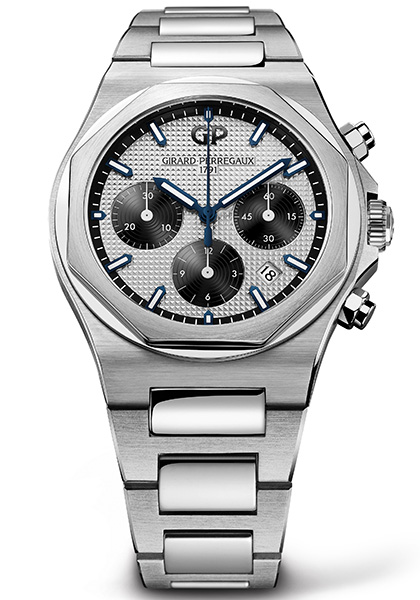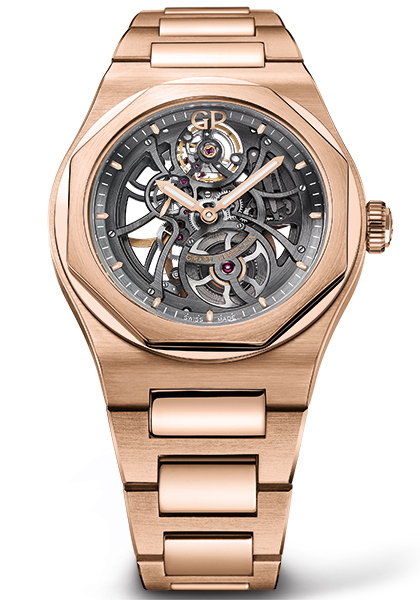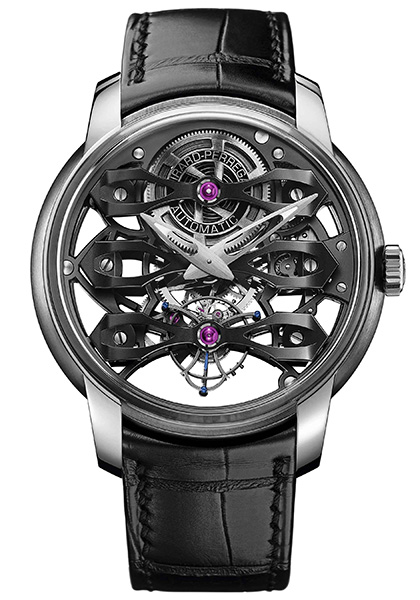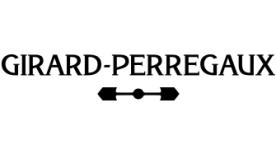Is the Laureato working as you had hoped?
One should always be cautious and humble, but the Laureato has met with considerable success. We pay great attention to sell-out, which is our sales to the end consumer. That is vital. We can no longer work just by looking at sell-in, which is retailer stock levels. This is not the right way to gauge the health of the watch industry. And sell-out has been very gratifying. But regardless of the figures, Girard-Perregaux had to find a strong, historic and legitimate product. It came out in 1975, at the same time, or even before, some of the strong historical products that blazed a trail for elegant sports watches in steel. We retained a strong identity and design, which are essential for building brand image. That isn’t possible with a very classical product. We have those too, but an icon with a strong identity can help you to stand out from the crowd.
Do you think classic watches are too generic?
Once you’re a few metres away from a classic watch, you can’t always tell what brand it is. That makes it harder to generate desire, because there are fewer surfaces, fewer different finishes. We had never presented the Laureato as an icon, as a product with a strong commercial dynamic. But it’s working, and this is only the start. The most important thing, however, was to find the right kind of product for commercial deployment.
Has the Laureato become a complete range?
Yes, it has been positioned as a collection for men and women, in multiple sizes, with multiple complications. This year, we have added the Laureato Chronograph line. We have a presence across several price ranges, which is very positive.

But you went up to the top of the range quite quickly.
Yes, we brought out a skeleton tourbillon, right at the top of the pyramid, very quickly. And now there’s a skeleton flying tourbillon. But because of our improved development times, we were able to do it. Previously, we worked far too slowly. It’s no longer enough to bring out one new series at a watch fair. This year we had four big ones, outside the fairs. Time to market isn’t the same as it used to be, when it was based on a sequential approach.
“We are working much faster, on products, movements and communication.”
What is your approach now?
We have revised our product development processes. Rather than 18 months, we’ve got it down to 6-8 months. We have gone for more extensive use of simple components across the board, so there is no need to constantly redesign them. And we don’t have to wait for one stage to finish before starting on the next. This is essential, because the world is moving at a certain speed, and we, through our organisation, have to keep up.
Have things speeded up for your clients too?
Our clients don’t wait for us: they want new products, new watches, fresh input. It is vital that we are able to deliver immediately. And we’ve achieved that: deliveries of the Laureato Chronograph will begin in three weeks, and the same goes for the white ceramic version. The problems we have had in recent years are not just down to external factors. In terms of how the watch industry works, we have to ask some hard questions, about how we reach clients who have moved away from the watch, which was also our own fault.
In geographical terms, are there some markets where the Laureato is more popular than others?
We have one iconic sport chic product, the Laureato; an ultra-classical product, the 1966; and a women’s product, the Cat’s Eye. But we don’t have any standard selection – not everyone receives the same watches. We are very careful about who gets the Laureato. It is delivered to only a hundred or so points of sale, out of a total of around 350, and that figure is falling. Some people won’t have access to it, and that’s deliberate. We have to avoid flooding the market, if we want to preserve the Laureato.
Does that mean you’re monitoring your retailers more closely?
We are now part of the Kering group, which means we have new resources, and we want to build up over the long term. We’re keeping very close tabs on sell-out and turnover. That is the kind of indicator that guides us.
At the very top of the range, you are continuing to produce haute horlogerie.
Absolutely. This year we will be launching the most complicated haute horlogerie timepiece that Girard-Perregaux has ever offered. We have combined a triaxial tourbillon with a minute repeater. It is very ethereal. Yes, this is a very important part of our range; we have always produced a few hundred very high-level pieces. Take the new Esmeralda, which is entirely hand-engraved: it is an extraordinary promotional tool, a real lever. Also, the Constant Escapement, which we are currently revising.

What about women?
We already have a women’s sport chic range with the Laureato, but we have developed a jewellery option focused on our Cat’s Eye model. But we’re not going to take this model off in every direction. Today it is a jewellery watch.
You have just introduced ceramic. What role does it play?
There’s a demand for a durable black, something that won’t wear out like surface treatments. And then there’s the novelty factor, a more fashionable side. We’ve kept all the finishes of the Laureato – polished, satin-brushed, the corners – and it gives the product a youthful touch.
Is this element of freshness important?
Girard-Perregaux has a 225-year history, and the weight of that history tends to be to pull us back into the past. We began with the Neo Tourbillon. But we also have to introduce it into the way we communicate. We are stepping back somewhat from the usual codes of watch imagery. We want to convey more emotion, and focus less on the product itself.
Is that your main task now?
Yes. Watch brands have always used the same ingredients. Watch fairs with hostesses in suits and cocktail receptions. We have a more playful way of presenting watches. Our showcases are more animated, more dynamic. It’s clear to me that the communication we’ve relied on for many years is no longer working. People couldn’t care less about our gold medal from the 1889 World’s Fair. Or from 1989. We have to change the conversation.
Is the modern input into your products at the level you want?
We’re getting there. With the Neo Bridges and the Neo Tourbillon Skeleton, we’re getting there. But we have to keep going. Working to breathe freshness into products that are also imbued with historical significance.

Within your group, you also have a very innovative brand, Ulysse Nardin. Do you ever work together?
Obviously, we are in an industrial committee together, where industrial synergies are starting to be introduced. And there are plenty more under consideration. We are open to anything that will not harm the integrity and the identity of the brand. We are looking in particular at pooling our existing components.





